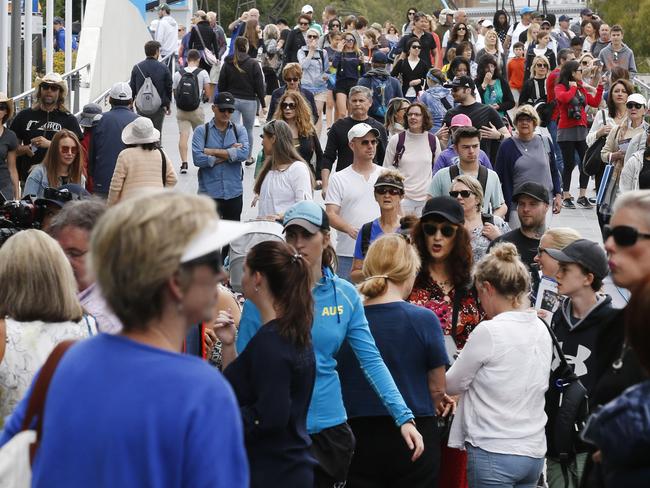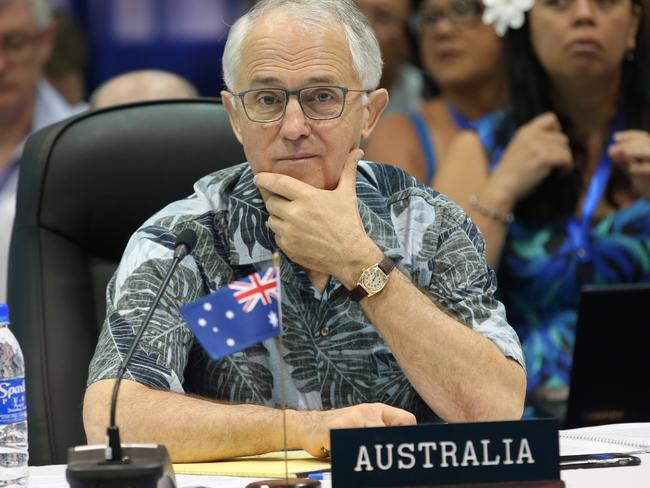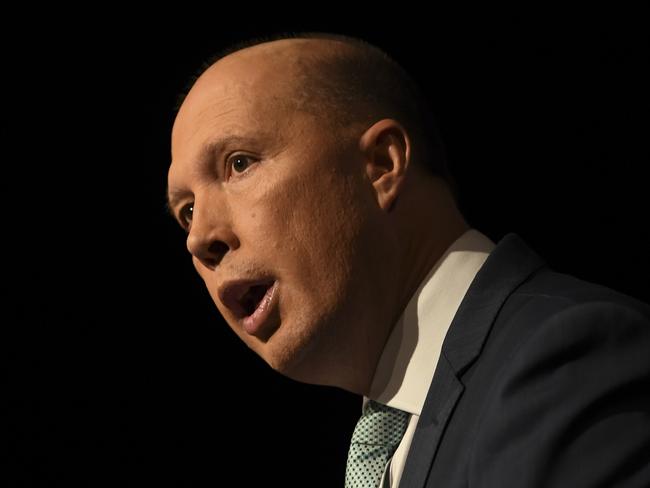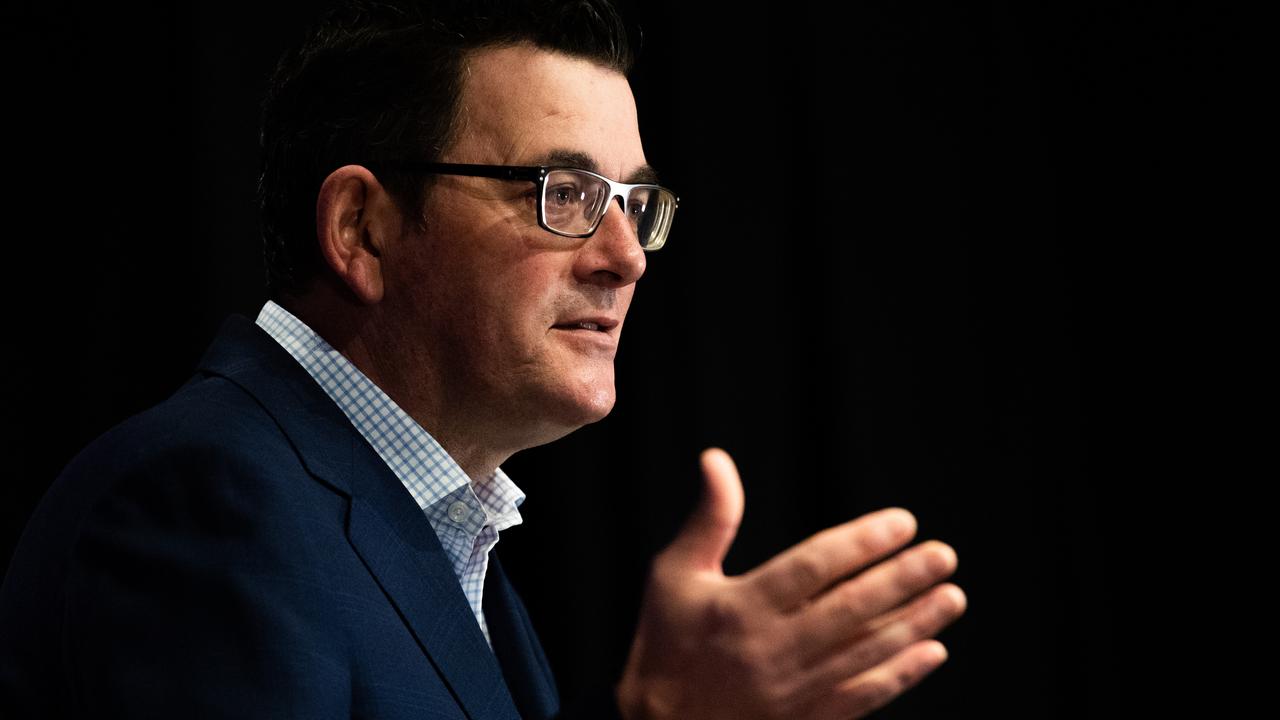Rita Panahi: Let’s heed public opinion on migration
RESEARCH shows some migrant groups are more capable and willing to enter the workforce and fully integrate into Australian society than others, writes Rita Panahi.
Rita Panahi
Don't miss out on the headlines from Rita Panahi. Followed categories will be added to My News.
IT says something about the sorry state of Australian politics that issues as crucial as immigration and population are deemed too difficult for public debate.
In the vacuum left by gutless Coalition and Labor politicians, the likes of One Nation and lobby groups such as Dick Smith’s Fair Go are weighing in.
SOUTH AFRICAN PLEA TO PETER DUTTON FOR VISA OVERHAUL
HOME AFFAIRS MINISTER CONFIRMS MIGRANT INTAKE TALKS WITH SENIOR COLLEAGUES
But for how much longer will mainstream politicians ignore the will of the majority to push ahead with a “big Australia” strategy?
As it stands, the population will be boosted by up to 190,000 permanent residents this year, plus 18,750 admitted under the humanitarian program.
Add to that figure the hundreds of thousands more who come here as temporary migrants, including those on student visas, 457-skilled temporary worker visas and working holiday maker visas.
Every single one of those people adds to the congestion on the roads and the demand for housing and services such as health care.

Of course, those migrants who work make a vital economic contribution and help alleviate the impact of our ageing population, which sees the burden of the growing welfare bill carried by a shrinking percentage of taxpayers.
It is clear that some migrant groups are better than others in overcoming language barriers, finding work and assimilating — but more on that later.
One of the many advantages of being an island nation, with sound border protection policies and a relatively low birth rate, is that we can control precisely how big and how quickly to grow. What should Australia’s population be in 2030, 2050 and beyond? Do we want to grow to a nation of more than 40 million, or is the ideal population closer to 25 million?
ANDREW BOLT: OBVIOUS IMMIGRATION PROBLEM NEEDS A SOLUTION
On current estimates, the population will have grown to 37.5—41.5 million by 2050.
That’s fine for those of us who support high immigration and growth, but the reality is that we are in the minority.
A number of polls have shown a clear majority want to curb immigration.
Voters having two broad concerns about our current intake: the volume and the mix.
A 2017 survey commissioned by the Australian Population Research Institute showed three in four voters believed we were “full” and did not support any further population growth.
And 55 per cent said Australia “was in danger of losing its culture and identity”.
Also, 52 per cent believed the country had changed to an extent where it “sometimes feels like a foreign country”.

Those survey findings mirror the results of a 2016 SBS-commissioned poll, carried out by Essential Research, that revealed 59 per cent thought immigration over the past decade had been too high, and 57 per cent were against increasing the refugee intake; 28 per cent were in favour. Close to half of those surveyed agreed that “multiculturalism had failed and caused social division and religious extremism’’.
If the Coalition wants to claw back lost ground and have some chance at re-election, then it needs to listen to the masses and alter its population policy.
It is now clear, despite Malcolm Turnbull’s denials, that Home Affairs Minister Peter Dutton did discuss lowering the annual intake of permanent residents from 190,000 to 170,000 but was rebuked by the Prime Minister and Treasurer Scott Morrison. Former PM Tony Abbott has suggested an even more dramatic cut to 110,000.
Turnbull will fly past Julia Gillard’s 33 losing Newspolls unless he can conceive an energy policy that leads to greater reliability and affordability and/or a population policy that is sufficiently different from Labor’s.
Given the improbability of the former, it is crucial that the Coalition clearly articulates a population policy that is palatable to the electorate.
They must explain what Australia’s target population is in the short, medium and long term, and how immigration policy will be manipulated to meet those targets.

Also, it’s important to clearly convey what the migrant mix will be. Some migrant groups are more capable and willing to enter the workforce and fully integrate into Australian society than others.
Analysis of Australian Bureau of Statistics data and Immigration Department studies published in The Australian last week showed that some ethnic groups were significantly more likely to be productive.
Skilled migrants from South Africa and England have unemployment rates of close to 2 per cent, less than half the national average of 5.6 per cent, and significantly lower than the 19—22 per cent for refugees from Afghanistan, Iraq and Sudan.
But refugees from Croatia had an unemployment rate of just 4 per cent. The figures also revealed that one in four migrants from non-English speaking backgrounds since 2006 has never held a job in Australia. This is despite the taxpayer paying for 500 hours of free English-language training.
It’s worth noting that Labor’s official policy is to increase our highest-costing component, the humanitarian intake, to 27,000 refugees a year by 2025.
It is up to the Coalition to provide a workable alternative before the next election and give disengaged voters something to think about.
Rita Panahi is a Herald Sun columnist



